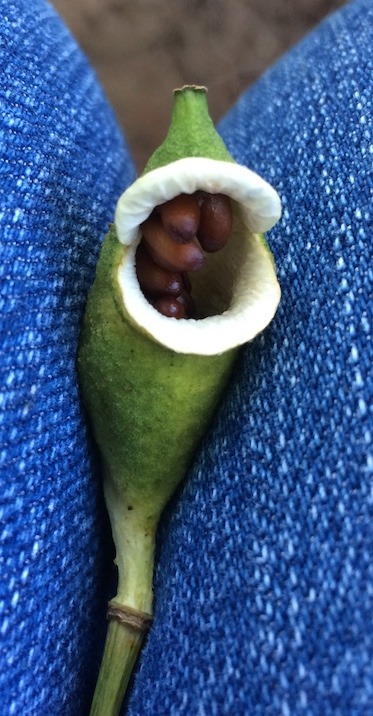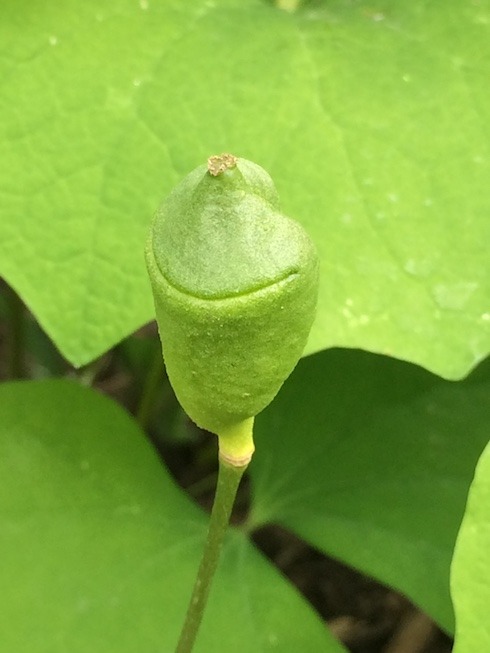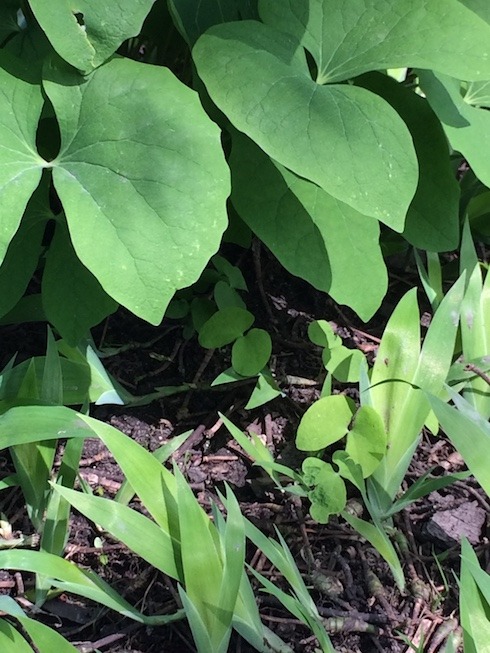The twinleaf has revealed its true self. It looks like a cigar-smoking little alien, doesn’t it? This is twinleaf at its silliest. How many plants can you say have a well-defined silly stage?

But this toothy stage is hard to catch—from the time the first pod pops until the last seed is gone is less than 24 hours. Here is a seedpod very carefully clipped and held so that you can see its full seediness.

It has a long face—it is flattened side to side. While the seed are maturing, the pods are flattened front to back in a wide-face configuration.

If someone were to study this closely, I think they may find that as the pods dry out and the abscission layer forms along that alien grin, the cell wall structure snaps the pod into its long-face configuration when the abscission layer gives way.
The seeds do not travel far. They fall out at the least excuse, scattering around their parents’ roots and creating colonies.

Now that it has shown off its fantastic seedpods, it will go back to being a nice clump of greenery.